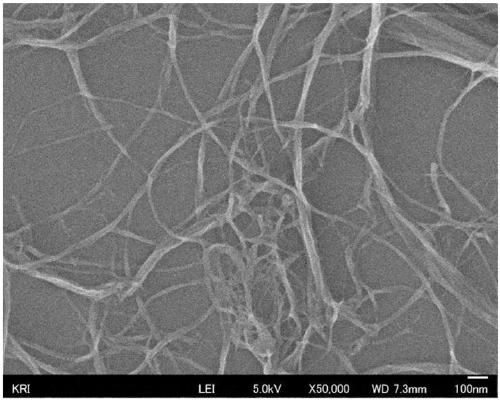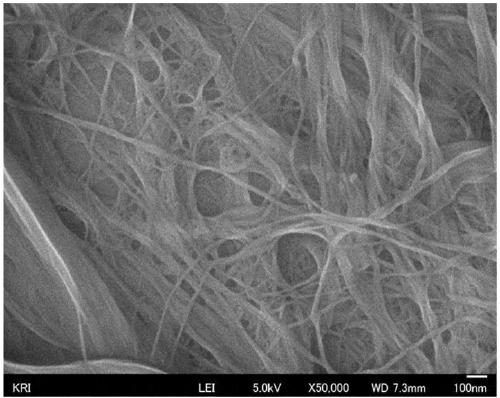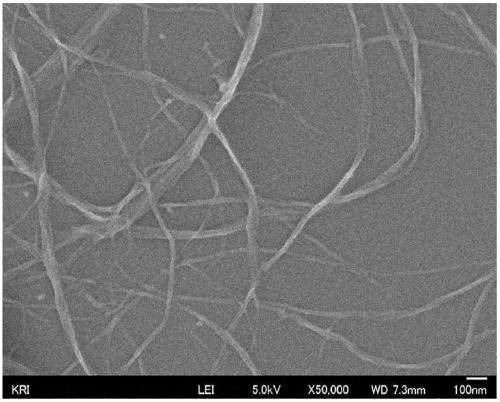Method for producing cellulose fine fiber
A manufacturing method and technology of microfibers, applied in post-treatment modification of cellulose pulp, modification of pulp properties, pretreatment with acidic compounds, etc., achieves the effects of less damage, excellent redispersibility, and large aspect ratio
- Summary
- Abstract
- Description
- Claims
- Application Information
AI Technical Summary
Problems solved by technology
Method used
Image
Examples
Embodiment 1
[0133] Add 10 g of formic acid aqueous solution and 0.3 g of cellulose pulp to a 20 ml sample bottle, stir with a magnetic stirrer for 3 hours, transfer to a 200 ml centrifuge tube, add 100 ml of distilled water, and wash by centrifugation. Centrifugation was performed three times in the same manner to remove formic acid and obtain cellulose fine fibers. The modification rate of the obtained cellulose fine fibers was quantified by solid-state NMR. In addition, the degree of defibration was observed with an optical microscope. The shape of the fine fiber was observed by FE-SEM. The results are shown in Table 1. As shown in Table 1, it was found that the surface of the cellulose fine fibers was not modified. The SEM photos are shown in figure 1 . The average fiber diameter of the cellulose fine fibers was 100 nm or less, and the average fiber length was 13.9 μm. The obtained fine fibers can be redispersed in water or ethylene glycol after drying at 105°C. Table 1 shows th...
Embodiment 2
[0135] Cellulose fine fibers were obtained in the same manner as in Example 1 except that 9 g of formic acid aqueous solution and 1 g of propionic anhydride were used instead of 10 g of formic acid aqueous solution, and the defibrating time was changed from 3 hours to 5 hours. The obtained cellulose fine fibers were evaluated in the same manner as in Example 1. The average ester substitution degree of the cellulose fine fibers was 0.5, the average fiber diameter was 100 nm or less which was substantially the same as in Example 1, and the average fiber length was 15.0 μm. The obtained fine fibers can be redispersed in dimethylacetamide, acetone, or methyl ethyl ketone after being dried in a blow dryer at 105°C. The SEM images of the fine fibers are shown in figure 2 . Table 1 shows the measurement results of crystallinity.
Embodiment 3
[0137] Except having used acetic anhydride instead of propionic anhydride, it carried out similarly to Example 2, and obtained the cellulose fine fiber. The obtained cellulose fine fibers were evaluated in the same manner as in Example 2. The average degree of ester substitution of the cellulose fine fibers was 0.6, the average fiber diameter was 100 nm or less, and the average fiber length was 12.2 μm. The obtained microfibers can be re-dispersed in dimethylacetamide after drying with a 105° C. blast dryer. The SEM images of the fine fibers are shown in image 3 . Table 1 shows the measurement results of crystallinity.
PUM
| Property | Measurement | Unit |
|---|---|---|
| diameter | aaaaa | aaaaa |
| aspect ratio | aaaaa | aaaaa |
| diameter | aaaaa | aaaaa |
Abstract
Description
Claims
Application Information
 Login to View More
Login to View More - R&D
- Intellectual Property
- Life Sciences
- Materials
- Tech Scout
- Unparalleled Data Quality
- Higher Quality Content
- 60% Fewer Hallucinations
Browse by: Latest US Patents, China's latest patents, Technical Efficacy Thesaurus, Application Domain, Technology Topic, Popular Technical Reports.
© 2025 PatSnap. All rights reserved.Legal|Privacy policy|Modern Slavery Act Transparency Statement|Sitemap|About US| Contact US: help@patsnap.com



